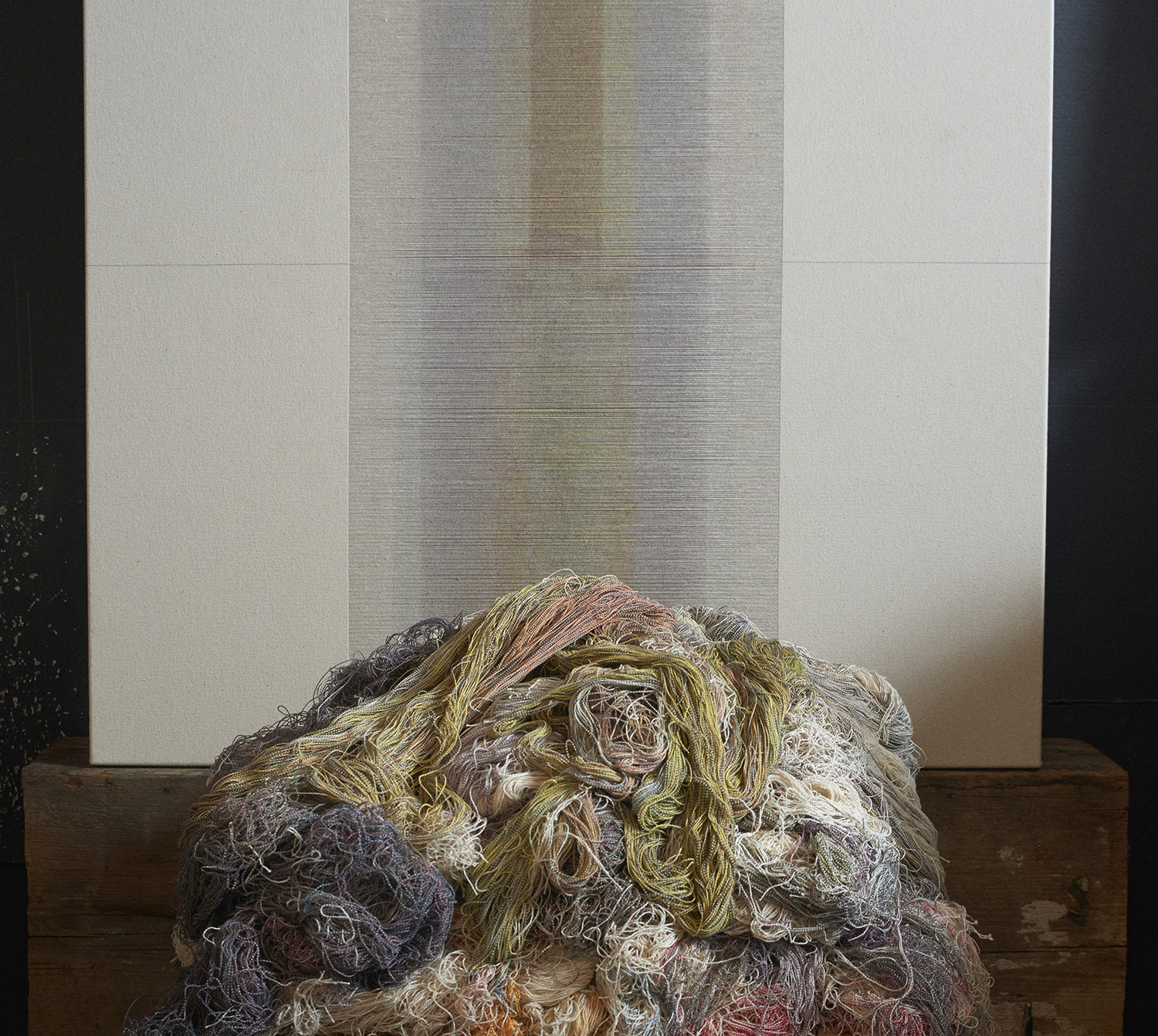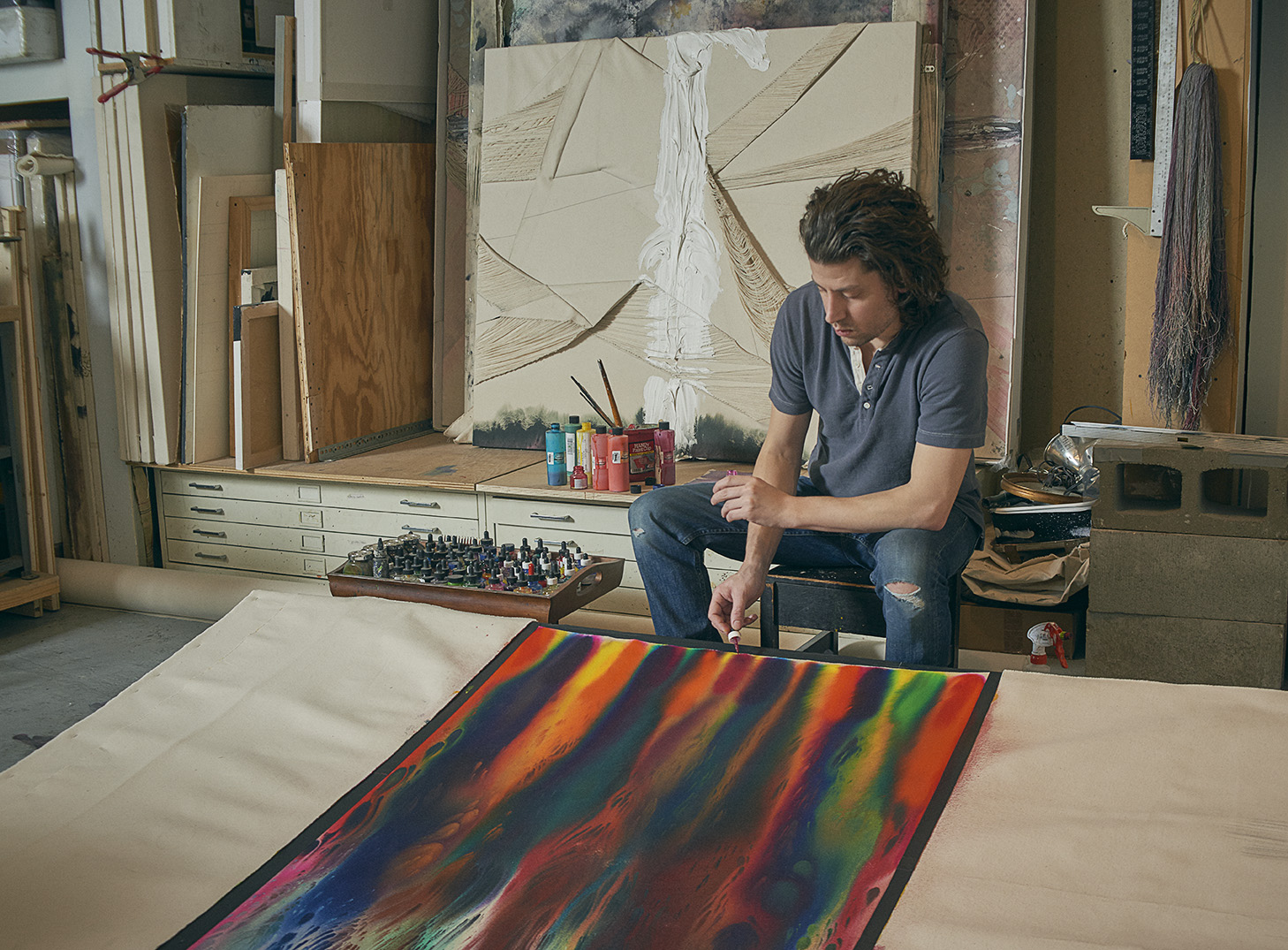myles@mylesbennett.com
bennettmyles@gmail.com
Writer: Annette Griffin for Nashville Arts Magazine
Photographer: Chris Callaway https://www.chriscallawaystudios.com/
His approach is fathomless: “I became involved in fibers because canvas just seemed like the most ubiquitous painting surface. As an architecture major I came at it from, ‘You take a brick or a stone and you see what you can do with stones or bricks.’ So when I got into art, I bought a bolt of canvas and was going into the material, just sort of this universal painting surface, but instead of building it up, I was going into it.”
Bennett draws less attention to labor than he does to experience, and in turn, intimacy. This diffusion of focus echoes the artist’s interests in sound and the individual. Antithetical to popular experience, Bennett’s substance lies in his imagining himself as the viewer. Much of his other work is figurative or wearable, and it’s interesting to note that in this case even his abstraction explores the human form, as choreographed by interstices.
True to training, he begins with site-specifics. “There’s a six-inch space between the floor and the partition walls. It just seemed like these walls were almost these very bizarre pieces in and of themselves.” (The walls at Bennett Galleries come in waves.) “So I kind of needed to recreate another surface; it’s almost like I’m creating a painting surface that is a wall surface. And then within that, there are breaks.”
Framing a wall as canvas is the kind of clever trick that reveals his wider talents. He’s known for his training in architecture at the Rhode Island School of Design but has dabbled in photography, ceramics, and other interests while settling on painting, textile, and wearable designs as his primary focuses. For Elements, he’s trading the genius of labor for intimacy, developing work so diffuse that it envelops a viewer, rather than merely drawing them in.
“Think of this as almost like a wall of sound. If you move your eye around, you’re always going to be very close to the work. You know, you can kind of have your own space without four people all looking at one little thing. It’s spread out so that everybody can have their moment.”
Here, Bennett’s work betrays a sincerity that minimalism alone cannot, alongside a quiet opinion of the way we view art. Even his pursuit of color runs commentary on the paragons of a traditional art school education and perhaps the New Hellenism of contemporary art.” I feel like I’m really going back to square one of color theory—but what I learned forever ago . . . You know, red, yellow, blue. These combinations are always sort of a vibration of black. I’m just separating all the colors out. On the front of the canvas I’ll paint a set of colors, and on the back of the canvas I’ll paint another set of colors.”
Then, using an exacto blade, he’ll carefully excise individual threads from the warp of the work. Heinous color quiets into meditation as he collects the detachments into bundles called cores. The remaining canvases are operatically colorful, yet quiet, like ikat negatives left under water. The dissipation of his paintings reveals wave patterns, delicate enough to be immersive, staunch enough to appear collected beside the obvious Rothko comparison. A combination of fine detail and allusion to sound wraps around Bennett’s experiential concept and succeeds his personal criterion for art: “I just want to see that what [the artist is] talking about and what they’re doing is the same thing. You know, I feel like people have a message, and then they have an aesthetic, and 90 percent of times it doesn’t mesh. But as long as what they’re saying and what they’re trying to do is on point, I’m very open aesthetically to different things.”
Of course, aesthetics aren’t principle in this work. They’re only the result of an experiment; one that hypothesizes understanding context well enough to tailor an experience to each viewer. In this scenario, resulting permutations mirror potential differences in visiting entities. Diffusions may shift or collide, but Bennett’s loyalty to his craft is guided by material and process. “If you keep following the process true to the process, you can end up in all these very different territories that you didn’t expect,” says Bennett. “They’re all deconstructed threads.”



